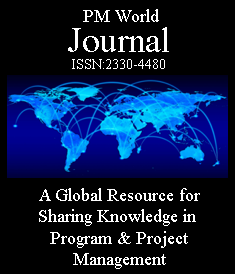REPORT
By Yamanta Raj Niroula
International Correspondent
Kathmandu, Nepal
From Recovery to Resilience: Quality Management in Post-disaster Reconstruction Projects
- Introduction
Ten years ago, on April 25, 2015, a devastating 7.8 magnitude earthquake struck Nepal, claiming nearly 9,000 lives, injuring over 16,800, and displacing 2.8 million people. It was the country’s worst seismic disaster since 1934. The catastrophe destroyed more than 800,000 homes and severely damaged critical infrastructures – schools, hospitals, and cultural heritage sites. Hundreds of aftershocks followed, including a powerful 7.3 magnitude quake on May 12, 2015. The United Nations estimated 8 million people in total, nearly a third of Nepal’s population, were affected by the quake and its aftershocks (History.com, 2018).
Every year, this date reminds me of the importance of building disaster-resilient infrastructure – a commitment I have upheld throughout my career managing projects in post-disaster and conflict-affected environments.
Nepal’s journey toward resilience continues, emphasized more recently by the November 2023 earthquake in Karnali Province. This event emphasizes the necessity of embedding quality in every stage of infrastructure development. This includes not only adhering to building codes and using earthquake-resistant construction methods but also implementing robust quality management practices, from the initial planning and design to the execution and maintenance phases. Today, quality management is not merely a technical requirement, it is a lifeline to ensure that development efforts protect communities and endure the test of time.
- Donor-funded Reconstruction Projects
In the wake of the devastating earthquakes of 2015 and 2023, Nepal has witnessed multiple reconstruction efforts. International partnerships have been instrumental in advancing Nepal’s post-earthquake recovery efforts, delivering tangible outcomes through targeted, resilient reconstruction:
-
- Emergency School Reconstruction Project (ESRP): Supported by the Japan International Cooperation Agency (JICA), this project reconstructed 274 schools across earthquake-affected regions. The schools were designed with multi-hazard resilience in mind and tailored to be inclusive – ensuring safe, accessible learning environments for children of all genders and abilities.
-
- Disaster Resilience of Schools Project (DRSP): Financed by the Asian Development Bank (ADB), the DRSP was a flagship initiative focused on enhancing the earthquake and disaster resilience of school infrastructure and communities across 14 of Nepal’s most severely affected districts. The project involved the reconstruction and retrofitting of 174 schools, aligning them with modern seismic safety standards. These upgraded schools feature earthquake-resistant designs and are equipped with science laboratories, ICT rooms, libraries, and gender-segregated water, sanitation, and hygiene (WASH) facilities, including dedicated menstrual hygiene support – ensuring both structural safety and inclusive learning environments.
-
- Nepal Community Reconstruction Program (NCRP): Funded by the United States Agency for International Development (USAID), the NCRP focused on restoring critical public services by rebuilding 18 health and education facilities in four earthquake-affected districts. These structures, too, adhered to principles of resilience and inclusivity, integrating child, gender, and disability-friendly features into their design and construction.
- The Case for Resilient Infrastructure
Resilience holds greater importance than recovery efforts. Traditionally, reconstruction has been considered as major undertaking in the aftermath of disasters, triggered by influx of international funding. This mindset is strengthened by past disasters like 2015 Nepal earthquake, where the scale of destruction attracted global attention.
More…
To read entire report, click here
How to cite this work: Niroula, Y. R. (2025). From Recovery to Resilience: Quality Management in Post-disaster Reconstruction Projects, report, PM World Journal, Vol. XIV, Issue V, May. Available online at: https://pmworldlibrary.net/wp-content/uploads/2025/05/pmwj152-May2025-Niroula-Project-Management-Update-from-Nepal.pdf
About the Author

Yamanta Niroula
Kathmandu, Nipal
![]()
Yamanta Niroula is a seasoned Project Management Professional with over 17 years of extensive experience in engineering, infrastructure development, and project management across diverse global environments. His expertise includes project planning, procurement, contract management, stakeholder coordination, and risk mitigation, with a strong focus on executing projects in remote and developing regions under complex operational conditions.
Yamanta holds a Bachelor of Engineering in Civil Engineering and a Master of Arts in Rural Development, along with a Diploma in Civil Engineering. He is a certified Project Management Professional (PMP®) and an active member of the Project Management Institute (PMI) since 2010.
Yamanta has extensive experience in project management, successfully overseeing all stages of construction projects from initial planning to final evaluation. He specializes in managing complex processes, including procurement, contracting, and execution, while maintaining efficiency and regulatory compliance. By staying updated on industry standards and advancements, he has ensured that projects are forward-thinking, sustainable, and adaptable to changing environments.
Yamanta has successfully managed large-scale infrastructure projects, including roads, electrical infrastructure, wastewater treatment plants, logistics facilities, and disaster recovery programs. He has served in various capacities as Project Controls Specialist, Design Manager, Planning Manager, Engineer and Project Manager across international organizations and UN agencies in Nepal, the Maldives, Singapore, Afghanistan, the Philippines, Nigeria, Yemen, Sudan, and Ethiopia.
He has been responsible for project design, planning, execution, and control, ensuring timely delivery, budget adherence, and quality assurance while enhancing overall program outputs.
Yamanta lives in Kathmandu, Nepal and can be contacted at niroulayr@gmail.com
View his full correspondent profile at https://pmworldlibrary.net/yamanta-raj-niroula/
To view other works by Yamanta Ray Niroula, visit his author showcase at https://pmworldlibrary.net/authors/yamanta-raj-niroula/









